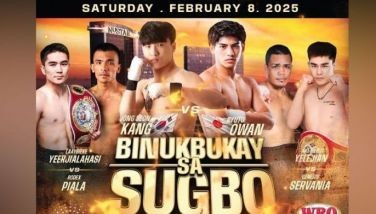Touched by Cory
Since late last week, a text has been rapidly making the rounds of the Ateneo and La Salle communities, requesting that all those watching tomorrow’s UAAP match-up to wear yellow instead of the traditional school colors, in honor of our late former President Corazon Aquino.
Although some are reluctant to go along with it, many who receive the text welcome the idea. After all, this is only going to happen once, and Mrs. Aquino herself was a symbol whose power cut across all demographics, political boundaries and other alliances.
It will definitely be a sight to see, the Araneta Coliseum awash in yellow, with a smattering of white, blue and green. It may actually cause confusion among ticket-holders, making it a tad more difficult to tell which side they’re sitting on. Needless to say, it will have no impact on the game itself. It doesn’t matter how strong each team is, a La Salle-Ateneo game is always a blockbuster.
This also brings to mind a final anecdote about the selflessness and charity demonstrated by Mrs. Aquino to a young basketball player whom she didn’t know, but is now a proud member of the De La Salle Green Archers.
Maui Villanueva was a member of the UAAP Juniors Mythical Team while playing for UPIS. The 6-4 center was looking forward to a strong career as a forward in college, when a surprising opportunity came his way.
Maui visited a friend at Reyes Gym when he was spotted by one of his former coaches, Beaujing Acot, who was Pido Jarencio’s assistant at UST until last season. Acot was helping conduct tryouts for Higashiyama High School, near Kyoto in Japan. The local school district had recently approved the recruitment of an additional foreign player for each high school in the area. Higashiyama already had a solid 6-5 Chinese center, and their coaching staff had heard how talented Filipino players were. Acot encouraged Villanueva to attend the final day of tryouts the next morning.
As luck would have it, in the final session, Maui so impressed the coaches that he was selected to fly to Japan. He would receive a two-year scholarship, get to play in a tough division (Higashiyama was a perennial contender), and would even be given a bicycle to get him around campus. The catch was they were leaving within 48 hours.
“We were very happy for Maui, because of the opportunity,” said Villanueva’s mother, Corinne, at the time. “But we also had mixed feelings because it was the first time that he would be traveling alone, and none of us could go with him.”
After a simple send-off among family and friends, Maui flew off to his new home, as recounted in this column that Monday four years ago. Soon after, I received a phone call from The STAR colleague Joanne Rae Ramirez. President Aquino had read our column, and would be in Kyoto in a matter of days. She wanted to see visit Maui, because she felt sorry that the young man would be separated from family and friends so suddenly.
“We were so surprised that President Aquino would want to visit our son,” said a joyous Corinne Villanueva. “What an honor for our family to have her go there just to see him. We couldn’t believe it.”
Needless to say, Mrs. Aquino’s visit caused quite a stir at the school. The Japanese student body was wondering who their new recruit was that a former head of state of his home country would even visit him. It made Maui’s adjustment easier, with the tremendous respect and honor he brought to the school with the simple, touching, motherly gesture of a beloved president.
Those are the kinds of memories ordinary Filipinos have of our most beloved president.
* * *
On a side note, the UAAP is selling separate tickets to the AdMU-DLSU game for several practical reasons. Both schools, in fact, supposedly refused the printing of standing-room only tickets, to the chagrin of many patrons who want to squeeze into The Big Dome. But this is not an uncommon practice internationally. At the Olympic Games, for example, there are usually three basketball sessions. The venue is filled for the morning doubleheader from 8 a.m. to 12 noon, then emptied for the afternoon session from 2 to 4 p.m., then emptied out once more for the evening session from 8 p.m. to midnight. Usually, the US basketball team plays in the game which coincides with prime time in the United States, upon coordination with the host organizing committee.
- Latest
- Trending





























